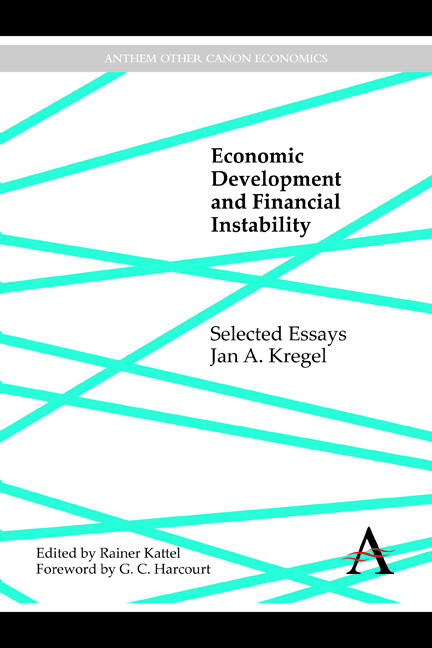Book contents
- Frontmatter
- Contents
- Foreword
- Publication History
- I Theoretical Discussions
- II Finance for Development
- 9 East Asia Is Not Mexico: The Difference between Balance of Payments Crises and Debt Deflations
- 10 Yes, “IT” Happened Again: The Minsky Crisis in Asia
- 11 Financial Liberalization and Domestic Policy Space: Theory and Practice with Reference to Latin America
- 12 Derivatives and Global Capital Flows: Applications to Asia
- 13 Was There an Alternative to the Brazilian Crisis?
- 14 An Alternative View of the Argentine Crisis: Structural Flaws in Structural Adjustment Policy
- 15 The Discrete Charm of the Washington Consensus
- III The Crisis in the US and the EU
- Index
15 - The Discrete Charm of the Washington Consensus
from II - Finance for Development
Published online by Cambridge University Press: 05 November 2014
- Frontmatter
- Contents
- Foreword
- Publication History
- I Theoretical Discussions
- II Finance for Development
- 9 East Asia Is Not Mexico: The Difference between Balance of Payments Crises and Debt Deflations
- 10 Yes, “IT” Happened Again: The Minsky Crisis in Asia
- 11 Financial Liberalization and Domestic Policy Space: Theory and Practice with Reference to Latin America
- 12 Derivatives and Global Capital Flows: Applications to Asia
- 13 Was There an Alternative to the Brazilian Crisis?
- 14 An Alternative View of the Argentine Crisis: Structural Flaws in Structural Adjustment Policy
- 15 The Discrete Charm of the Washington Consensus
- III The Crisis in the US and the EU
- Index
Summary
Alternating Development Strategies in Latin America
Latin America has experimented with two different development strategies over the last two centuries. During the first hundred years of its independence, Latin America pursued increasing integration into the international trading system via an “outward-oriented” development strategy based on exports of primary commodities, in conditions of open and volatile external capital inflows leading to periodic financial crises. The results were generally positive and, at the beginning of the First World War, per capita income in Argentina (the most advanced Latin American economy) exceeded that of France, Germany, Italy, and Spain; per capita GDP for the region as a whole exceeded that of Japan, and was around three times the average for the rest of East Asia.
However, the policy faltered as the U.S. economy replaced the UK as the motor of global demand and finally became unsustainable in the face of the collapse of primary commodity prices and developed-country trade restrictions during the 1930s depression. As a response to the collapse of external markets for its exports and the subsequent interruptions of transatlantic trade during the Second World War that cut off essential imports of industrial goods from Europe, domestic industrialization from within (desde dentro) was the natural response. This policy emphasized the importance of domestic demand in building domestic industry to replace European imports and eventually came to be called “import substitution industrialization,” as protection of domestic industry from foreign competition was substituted for the natural protection of the war years.
- Type
- Chapter
- Information
- Economic Development and Financial InstabilitySelected Essays, pp. 241 - 256Publisher: Anthem PressPrint publication year: 2014



